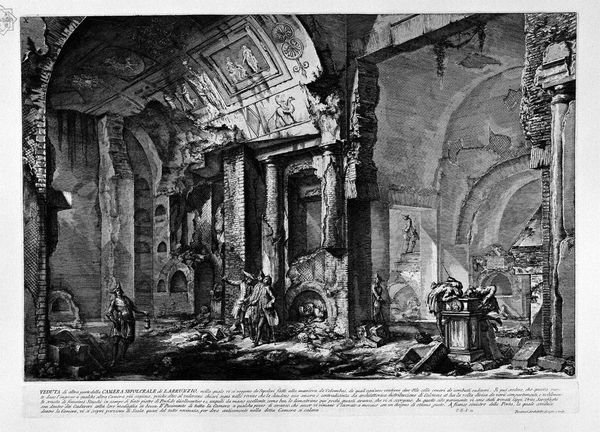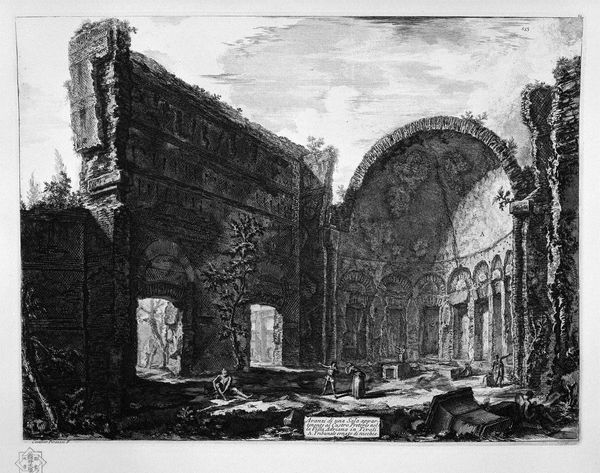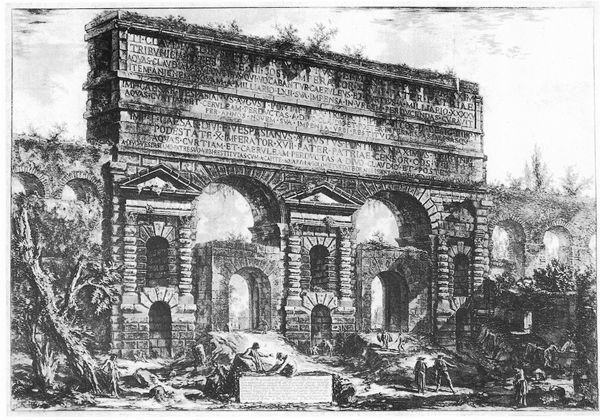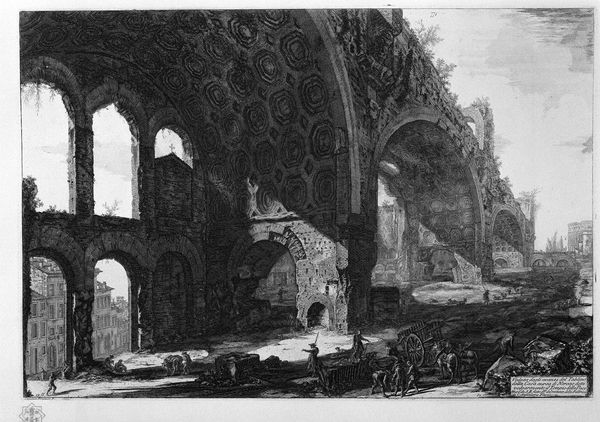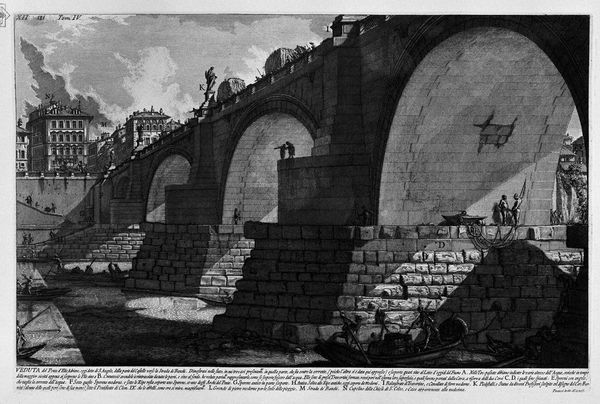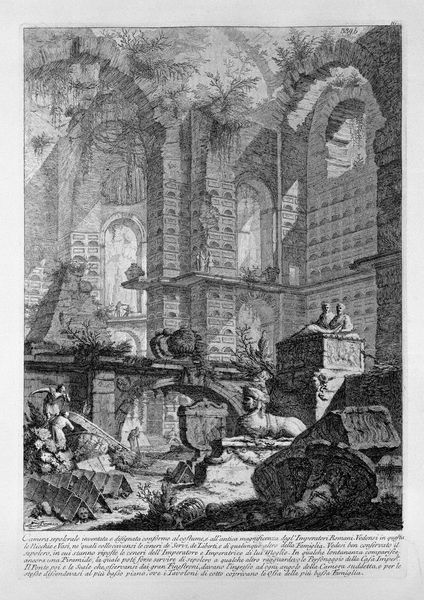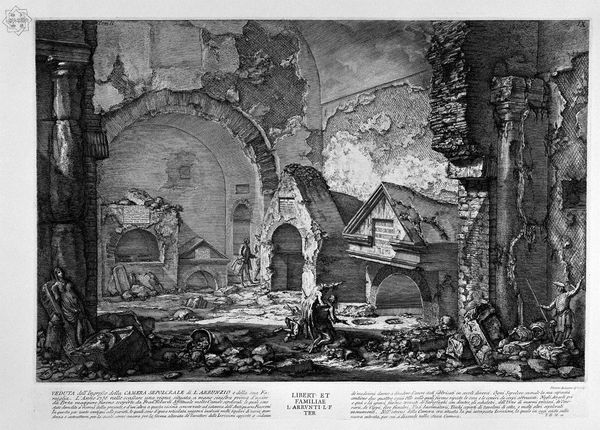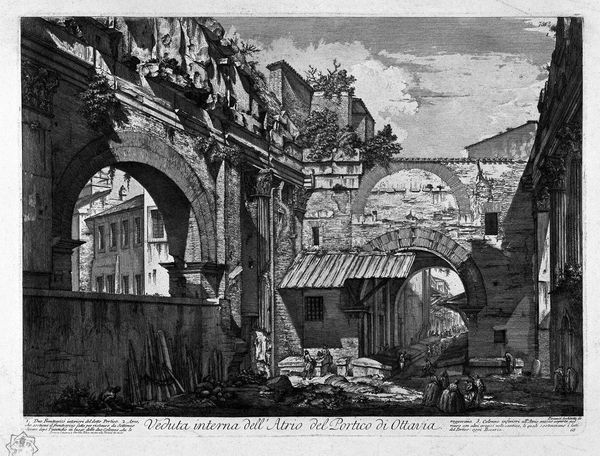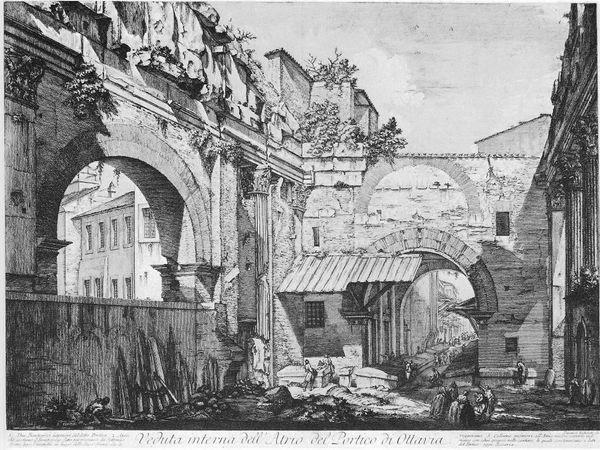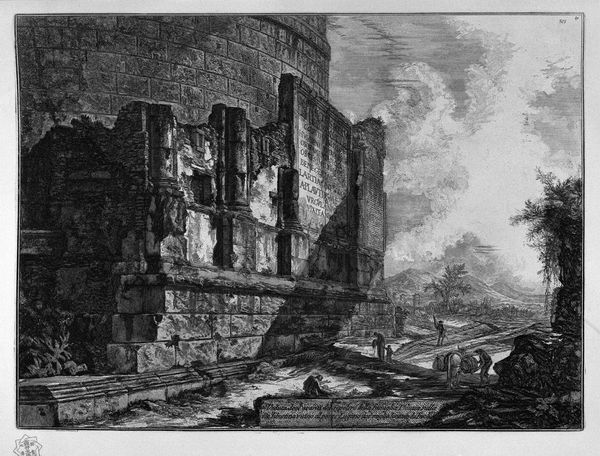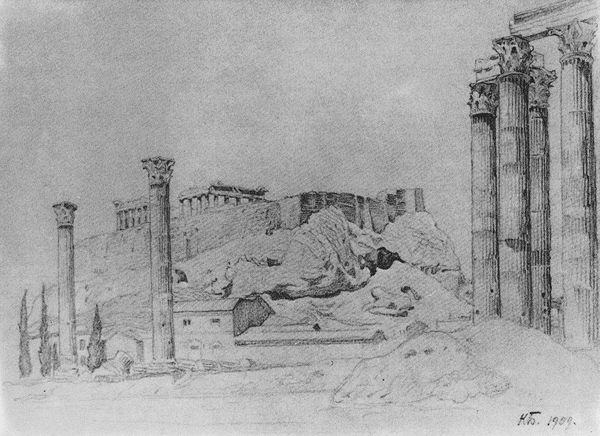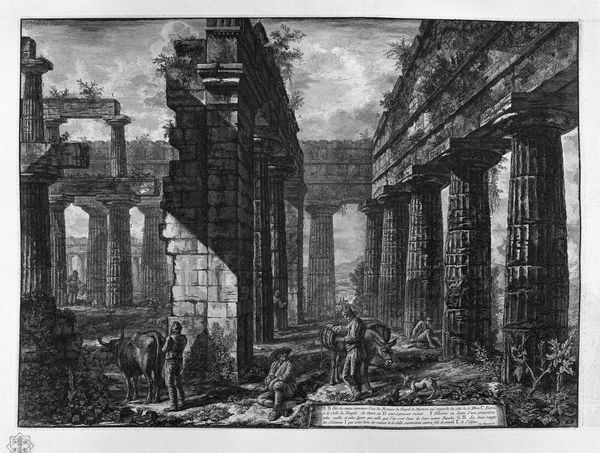
The Roman antiquities, t. 2, Plate XVI. Inscriptions and fragments of the burial chambers of the Family Arrunzia (figures carved from Barbault).. 1756
0:00
0:00
drawing, print, etching, photography, architecture
#
drawing
# print
#
etching
#
sculpture
#
photography
#
romanesque
#
column
#
black and white
#
carved
#
architecture
Copyright: Public domain
Editor: This is Giovanni Battista Piranesi's "The Roman Antiquities, t. 2, Plate XVI. Inscriptions and fragments of the burial chambers of the Family Arrunzia," created in 1756. It's a drawing, etching and print. The sheer scale and the sense of decay are overwhelming! What can you tell me about this work? Curator: Piranesi presents us not just with Roman ruins, but with a critical lens on history and power. It's not simply about celebrating antiquity. What do you observe about the figures included? Editor: They seem out of place, almost like tourists in a tomb. Curator: Exactly! This juxtaposition is key. Piranesi uses these small figures to emphasize the grandeur of the Roman architecture but also, crucially, to comment on the contemporary obsession with the past. Who gets to access and interpret history, and for what purposes? Notice how the etching technique captures both the monumental scale and the crumbling details. Is there something that stands out? Editor: How the names are carved on the walls makes it feel as though they belong to people who had some kind of power or influence. Curator: That’s a critical observation. This wasn't a neutral act of documentation; it was a conscious decision to highlight particular voices, immortalized within these structures. Moreover, the romantic ruins speak about how societal forces impacted people back then as opposed to today's struggles. Considering that intersectionality is crucial to examine beyond their historical contexts. What does the composition tell us about who controlled the narrative? Editor: That's insightful. The placement of those figures and the decaying architecture really pushes us to consider the power dynamics embedded in how we view history. Thanks for sharing your perspective. Curator: And thank you for drawing out such thoughtful observations. Piranesi urges us to constantly question the present through the lens of the past and to examine whose stories are amplified and whose are silenced within these representations.
Comments
No comments
Be the first to comment and join the conversation on the ultimate creative platform.

